Lenovo Yoga C640 (13) review – a gap-filler that is actually very decent
 Yet another Yoga has come to the market very recently. It is the Yoga C640 (13), which is a 13-inch convertible that tries to balance on price and versatility while giving you the best performance it cans.
Yet another Yoga has come to the market very recently. It is the Yoga C640 (13), which is a 13-inch convertible that tries to balance on price and versatility while giving you the best performance it cans.
What is Lenovo’s target? Well, first you got art students, that could really use the features of this notebook, as well as its Pen that comes inside the box, depending on your region. Actually, not only students but all kinds of people dealing with art would be able to appreciate this device. According to the specs sheet and our first look at it. Speaking of specs sheet – Lenovo has given this notebook the fresh Comet Lake processors from Intel. They are still based on a 14nm architecture, yet they are a lot more efficient and reach higher Turbo clock speeds.
You can check the prices and configurations in our Specs System: https://laptopmedia.com/series/lenovo-yoga-c640-13/
Contents
Specs Sheet
- HDD/SSD
- up to 512GB SSD
- M.2 Slot
- 1x 2242 M.2 PCIe x2 See photo
- RAM
- up to 16GB
- OS
- Windows 10 Home
- Battery
- 60Wh, 4-cell
- Dimensions
- 306.8 x 204.5 x 16.9 mm (12.08" x 8.05" x 0.67")
- Weight
- 1.25 kg (2.8 lbs)
- Ports and connectivity
- 1x USB Type-C
- Power Delivery (PD), DisplayPort
- 2x USB Type-A
- 3.2 Gen 1 (5 Gbps)
- Wi-Fi
- 802.11ac
- Bluetooth
- 5.0
- Audio jack
- 3.5 mm combo
- Features
- Fingerprint reader
- optional
- Web camera
- HD
- Backlit keyboard
- Microphone
- Far-Field
- Optical drive
- Security Lock slot
All Lenovo Yoga C640 (13″) configurations
What’s in the box?
This laptop’s packaging contains the laptop, a 65W power adapter, and as we mentioned – an optional Lenovo Pen.
Design and construction
Yoga C640 (13) is all about versatility. It is pretty lightweight (1.35 kg), has a height of 17mm and is designed in a rather robust manner. Its structural integrity is ensured by aluminum on the lid and a Glass Fiber-infused Polycarbonat for the base. While the latter can be viewed as more or less plastic, the glass fibers give it extra strength, while keeping the material flexible enough, not to break when you press hard on it with a book or something.
Expectedly for a 2-in-1, the lid cannot be opened with a single hand. However, in terms of physical resistance, this lid is a champ. Not only you can rely on the aluminum cover, but also the glass on top of the display highly increase the proneness to flexes. What we didn’t like is that the display is not very stable in an upright position and it is not very comfortable to use the touchscreen, while the display is wobbling around like crazy.
Then we come to the base of the device. The first thing you notice when you try typing on the keyboard is actually rubberized finish on the material around it. It is pleasant to the touch, although only time will show how it ages. On the other hand, the keyboard itself is a great deal on the Yoga C640 (13). It has a pretty long travel, backlight illumination and feedback is clicky enough while remaining relatively quiet when typing.
After that astonishing keyboard, we are left with expectations too high to meet for the touchpad. It is decent in size for a 13-incher, but it is not great for maneuvering around. Well, yes, it is better than some devices on the market, but it is also worse than the one on Dell Latitude 5300 for example. Nevertheless, we have to note that the area around it flexes deliberately when you press upon it. However, this is completely normal for the material it uses, and you may never have a problem with it.
Wait! We almost forgot, it seems like Lenovo has decided to put the speakers on the top – facing the user, which is better in the general scenario. This leaves only the speaker grills remaining on the bottom plate, while the heat is dissipated from the back.
Ports
On the left side of the machine, you can find the power plug, as well as a USB Type-A 3.1 (Gen. 1) port and an Audio Jack. Then, on the right, you will find the power on/off button, another USB Type-A 3.1 (Gen. 1) port and a USB Type-C port of the same speed and that can output a DisplayPort.
Disassembly, upgrade options and maintenance
This notebook’s back cover is held in place by only 6 Torx-head screws. After you manage to take them out, there are just some clips left to pop before you undo it.
Look. At. This. Fan. It is incredibly small… Despite the big size of the heat pipe, there is a big chance that this cooling may not work properly. Nevertheless, we’re going to see that in a minute.
Well, upgradability doesn’t seem to be a strong point here, either. There is only one M.2 slot on this machine that fits only teeny weeny M.2 2242 SSDs that work with only two PCIe lanes. With that said, at least there are some options with the storage, as the memory is soldered to the motherboard.
Lastly, but definitely not least, is the battery. Lenovo has given the Yoga C640 (13) a behemoth of a battery – 60Wh for a 13-inch laptop will always be great.
Display quality
Lenovo Yoga C640 (13) is equipped with a Full HD touchscreen IPS panel, AUO B133HAN05.F (AUO5F2D). Its diagonal is 13.3-inch (33.78 cm), and the resolution – 1920 х 1080p. Additionally, the screen ratio is 16:9, the pixel density – 166 ppi, their pitch – 0.153 х 0.153 mm. The screen can be considered Retina when viewed from at least 53 cm (from this distance, the average human eye can’t see the individual pixels).

Viewing angles are great. We offer images at different angles to evaluate the quality.

The maximum measured brightness is 302 nits (cd/m2) in the middle of the screen and 292 nits (cd/m2) average across the surface with a maximum deviation of 7%. The Correlated Color Temperature on a white screen and at maximum brightness is 6500K – completely matching the 6500K temperature for sRGB. The average color temperature through the grey scale before profiling is 6640K.
In the illustration below you can see how the display performs from uniformity perspective. The illustration below shows how matters are for operational brightness levels (approximately 140 nits) – in this particular case at 78% Brightness (White level = 139 cd/m2, Black level = 0.083 cd/m2).
Values of dE2000 over 4.0 should not occur, and this parameter is one of the first you should check if you intend to use the laptop for color-sensitive work (a maximum tolerance of 2.0 ). The contrast ratio is excellent – 1670:1 (1480:1 after profiling).

To make sure we are on the same page, we would like to give you a little introduction to the sRGB color gamut and the Adobe RGB. To start, there’s the CIE 1976 Uniform Chromaticity Diagram that represents the visible specter of colors by the human eye, giving you a better perception of the color gamut coverage and the color accuracy.
Inside the black triangle, you will see the standard color gamut (sRGB) that is being used by millions of people in HDTV and on the web. As for the Adobe RGB, this is used in professional cameras, monitors, etc for printing. Basically, colors inside the black triangle are used by everyone and this is an essential part of the color quality and color accuracy of a mainstream notebook.
Still, we’ve included other color spaces like the famous DCI-P3 standard used by movie studios, as well as the digital UHD Rec.2020 standard. Rec.2020, however, is still a thing of the future and it’s difficult for today’s displays to cover that well. We’ve also included the so-called Michael Pointer gamut, or Pointer’s gamut, which represents the colors that naturally occur around us every day.
The yellow dotted line shows Lenovo Yoga C640 (13)’ color gamut coverage.
Its display covers 92% of the sRGB/ITU-R BT.709 (web/HDTV standard) in CIE1976, providing a punchy and vibrant image.

Our “Design and Gaming” profile delivers optimal color temperature (6500K) at 140 cd/m2 luminance and sRGB gamma mode.
We tested the accuracy of the display with 24 commonly used colors like light and dark human skin, blue sky, green grass, orange, etc. You can check out the results at factory condition and also, with the “Design and Gaming” profile.
Below you can compare the scores of Lenovo Yoga C640 (13) with the default settings (left), and with the “Gaming and Web design” profile (right).


The next figure shows how well the display is able to reproduce really dark parts of an image, which is essential when watching movies or playing games in low ambient light.
The left side of the image represents the display with stock settings, while the right one is with the “Gaming and Web Design” profile activated. On the horizontal axis, you will find the grayscale and on the vertical axis – the luminance of the display. On the two graphs below you can easily check for yourself how your display handles the darkest nuances but keep in mind that this also depends on the settings of your current display, the calibration, the viewing angle, and the surrounding light conditions.

Response time (Gaming capabilities)
We test the reaction time of the pixels with the usual “black-to-white” and “white-to-black” method from 10% to 90% and vice versa.
We recorded Fall Time + Rise Time = 31 ms.

Health impact – PWM / Blue Light
PWM (Screen flickering)
Pulse-width modulation (PWM) is an easy way to control monitor brightness. When you lower the brightness, the light intensity of the backlight is not lowered, but instead turned off and on by the electronics with a frequency indistinguishable to the human eye. In these light impulses, the light/no-light time ratio varies, while brightness remains unchanged, which is harmful to your eyes. You can read more about that in our dedicated article on PWM.
Lenovo Yoga C640 (13)’s display doesn’t use PWM to adjust its brightness levels at any point. This ensures a comfortable working experience for a long period of time, while not harming your eyes in this aspect.

Blue light emissions
Installing our Health-Guard profile not only eliminates PWM but also reduces the harmful Blue Light emissions while keeping the colors of the screen perceptually accurate. If you’re not familiar with the Blue light, the TL;DR version is – emissions that negatively affect your eyes, skin and your whole body. You can find more information about that in our dedicated article on Blue Light.
Conclusion
This laptop’s touchscreen display has a Full HD resolution, comfortable viewing angles and great contrast ratio. Moreover, it covers 92% of sRGB and its backlight doesn’t flicker at any point. Not only that but with the appropriate profile, the colors at accurate enough, for a Web designer to use the notebook for work.
Buy our profiles
Since our profiles are tailored for each individual display model, this article and its respective profile package are meant for Lenovo Yoga C640 (13) configurations with 13.3″ AUO B133HAN05.F (AUO5F2D) (FHD, 1920 × 1080) IPS panel.
*Should you have problems with downloading the purchased file, try using a different browser to open the link you’ll receive via e-mail. If the download target is a .php file instead of an archive, change the file extension to .zip or contact us at [email protected].
Read more about the profiles HERE.
In addition to receiving efficient and health-friendly profiles, by buying LaptopMedia's products you also support the development of our labs, where we test devices in order to produce the most objective reviews possible.

Office Work
Office Work should be used mostly by users who spend most of the time looking at pieces of text, tables or just surfing. This profile aims to deliver better distinctness and clarity by keeping a flat gamma curve (2.20), native color temperature and perceptually accurate colors.

Design and Gaming
This profile is aimed at designers who work with colors professionally, and for games and movies as well. Design and Gaming takes display panels to their limits, making them as accurate as possible in the sRGB IEC61966-2-1 standard for Web and HDTV, at white point D65.

Health-Guard
Health-Guard eliminates the harmful Pulse-Width Modulation (PWM) and reduces the negative Blue Light which affects our eyes and body. Since it’s custom tailored for every panel, it manages to keep the colors perceptually accurate. Health-Guard simulates paper so the pressure on the eyes is greatly reduced.
Get all 3 profiles with 33% discount
Sound
Lenovo Yoga C640 (13) has a good sound quality. It is tuned with the Dolby Atmos technology. Additionally, the low, mid and high tones are clear of deviations.
Drivers
You can find all of the drivers and utilities for this notebook here: https://pcsupport.lenovo.com/us/en/products/laptops-and-netbooks/yoga-series/yoga-c640-13iml/downloads/driver-list
Battery
Now, we conduct the battery tests with Windows Better performance setting turned on, screen brightness adjusted to 120 nits and all other programs turned off except for the one we are testing the notebook with. The enormous for the size of the notebook 60Wh battery pack provided extraordinary results.
Not only we got 20 minutes shy of 19 hours of Web browsing, which is more than two workdays, but when it comes to video playback, the time rises to more than 27 hours – insane!
In order to simulate real-life conditions, we used our own script for automatic web browsing through over 70 websites.
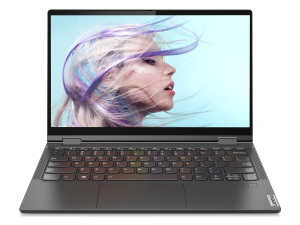
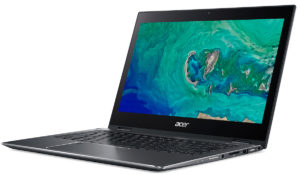
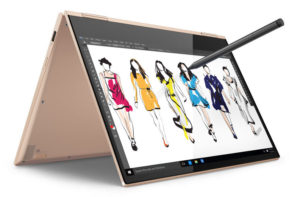
For every test like this, we use the same video in HD.



We use F1 2017’s built-in benchmark on loop in order to simulate real-life gaming.



CPU options
Lenovo sells this notebook with the three Comet Lake CPUs from Intel – the Core i3-10110U (two cores/four threads), and the Core i5-10210U and Core i7-10510U, which are equipped with four cores and eight threads.
Results are from the Cinebench 20 CPU test (the higher the score, the better)
Results are from our Photoshop benchmark test (the lower the score, the better)
GPU options
The Yoga C640 (13) can be found only with the integrated UHD Graphics.
Results are from the 3DMark: Time Spy (Graphics) benchmark (higher the score, the better)
Results are from the 3DMark: Fire Strike (Graphics) benchmark (higher the score, the better)
Results are from the Unigine Superposition benchmark (higher the score, the better)
Gaming tests

| CS:GO | HD 1080p, Low (Check settings) | HD 1080p, Medium (Check settings) | HD 1080p, MAX (Check settings) |
|---|---|---|---|
| Average FPS | 54 fps | 30 fps | – fps |

| DOTA 2 | HD 1080p, Low (Check settings) | HD 1080p, Normal (Check settings) | HD 1080p, High (Check settings) |
|---|---|---|---|
| Average FPS | 75 fps | 36 fps | 19 fps |
Temperatures and comfort
Max CPU load
In this test we use 100% on the CPU cores, monitoring their frequencies and chip temperature. The first column shows a computer’s reaction to a short load (2-10 seconds), the second column simulates a serious task (between 15 and 30 seconds), and the third column is a good indicator of how good the laptop is for long loads such as video rendering.
Average core frequency (base frequency + X); CPU temp.
| Intel Core i5-10210U (15W TDP) | 0:02 – 0:10 sec | 0:15 – 0:30 sec | 10:00 – 15:00 min |
|---|---|---|---|
| Lenovo Yoga C640 (13) | 2.87 GHz (B+79%) @ 73°C | 2.89 GHz (B+81%) @ 85°C | 2.23 GHz (B+39%) @ 87°C |
| Dell Vostro 5590 | 3.50 GHz (B+119%) @ 94°C | 2.68 GHz (B+68%) @ 97°C | 2.36 GHz (B+48%) @ 79°C |
| Lenovo Yoga C740 (14) | 3.09 GHz (B+93%) @ 96°C | 2.66 GHz (B+66%) @ 97°C | 1.96 GHz (B+23%) @ 71°C |
For a 13-inch convertible laptop, we got a decent performance out of the Core i5-10210U. What is interesting about it, is that it has a super tiny fan that has the job of cooling the processor. While, the frequency at the beginning is significantly lower than what we got from the other laptops we tested with this processor, the one at the end is pretty decent. On the downside, the temperature at the end is rather high.
Comfort during full load
As you can see from the IR images below, the higher end temps result in rather high outside temperatures of the device. Additionally, the fan produces a weir whining noise, but this is mostly to its size, rather than a hardware issue.


Verdict
 So, in the first place, we would want to mention that this laptop feels like a gap-feeling notebook. Somewhere between the Yoga 500 and Yoga 700 series. However, when we got some time with it, and of course, didn’t take into consideration the aforementioned, the Yoga C640 (13) actually does a pretty fine job. And has a great keyboard too.
So, in the first place, we would want to mention that this laptop feels like a gap-feeling notebook. Somewhere between the Yoga 500 and Yoga 700 series. However, when we got some time with it, and of course, didn’t take into consideration the aforementioned, the Yoga C640 (13) actually does a pretty fine job. And has a great keyboard too.
Its display (AUO B133HAN05.F (AUO5F2D)) is probably a standout here. Not only it has decent maximum brightness, great viewing angles (which is extremely important in a convertible device), and good contrast ratio, but it also covers 92% of sRGB and it doesn’t use PWM to adjust its brightness levels. On top of that, with the help of our Gaming and Web design profile, the colors become extremely color accurate and drop to around dE 1.0.
Speaking of extreme – let’s talk battery life. This is one of the few 13-inch laptops that are fitted with a 60Wh pack. This, combined with the incredible work from Lenovo and their software department, give the users of this laptop around 19 hours of Web browsing and the whopping 27 hours of video playback. This is more than an entire day of watching videos – how is that possible?
Sadly, there are some downsides – some of them include the wanky lid when it is put in an upright position, which definitely deprives you of using the touchscreen. Then, there is the limited I/O and the even more limited upgradability. You can neither put any additional RAM on your device nor put any SSD other than an M.2 2242 drive.
Lastly, there is the heat – its base gets pretty warm under stress and moreover, the bottom panel gets even warmer. We didn’t feel it as an extreme problem but is definitely worth noting.
Despite that, we would definitely recommend this notebook to someone that wants something quick, intuitive and easy to use with a Pen. It actually seems like the Yoga C640 (13) is better in this aspect than the more expensive Yoga C740 (14) and C940 (14).
Pros
- Great price
- Insane battery life (27 hours of video playback on battery power)
- Covers 92% sRGB (AUO B133HAN05.F (AUO5F2D))
- Average dE value of 1.1 with our Gaming and Web design (AUO B133HAN05.F (AUO5F2D))
- Doesn’t use PWM to adjust screen brightness (AUO B133HAN05.F (AUO5F2D))
- Has a Pen inside the box and works perfectly fine with it
- Very comfortable keyboard
Cons
- No SD card reader
- Poor upgradability options
- Limited I/O
- Gets a little warm on the outside
You can check the prices and configurations in our Specs System: https://laptopmedia.com/series/lenovo-yoga-c640-13/
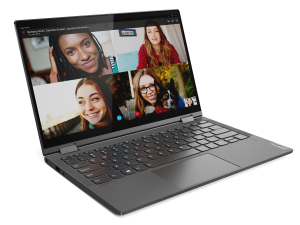
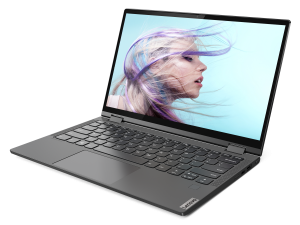
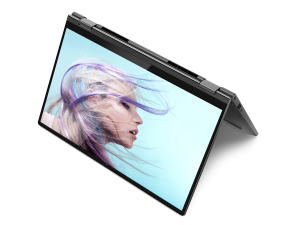
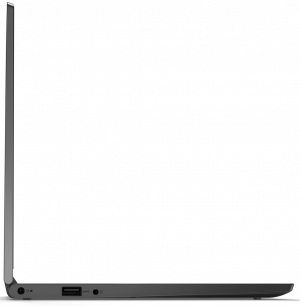
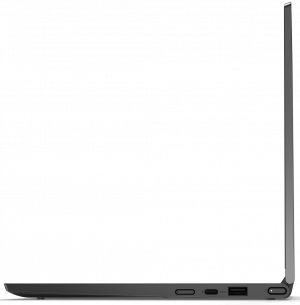




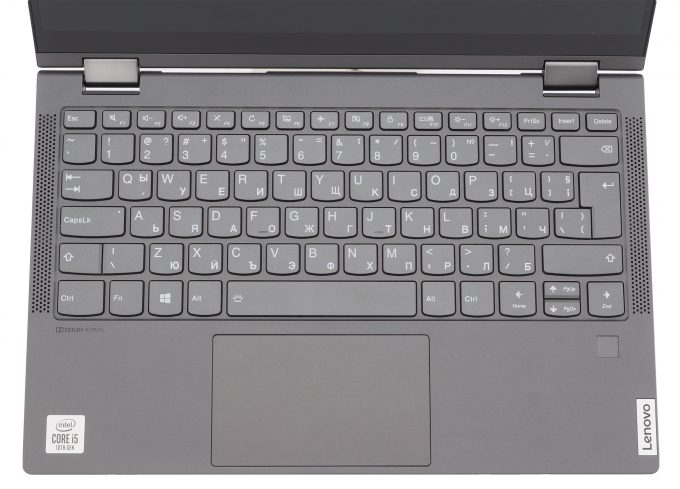



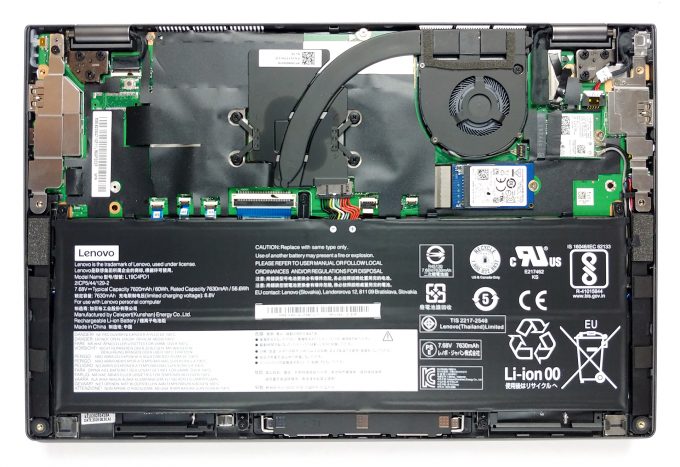

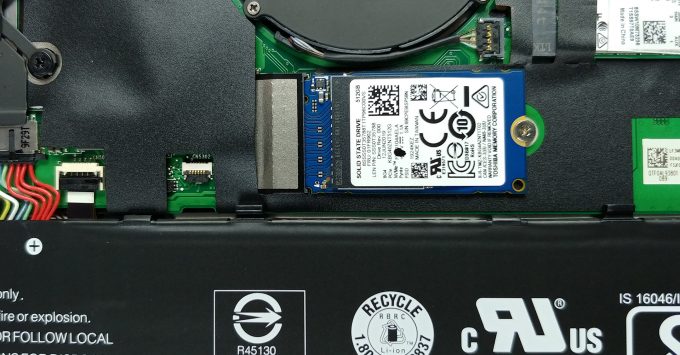
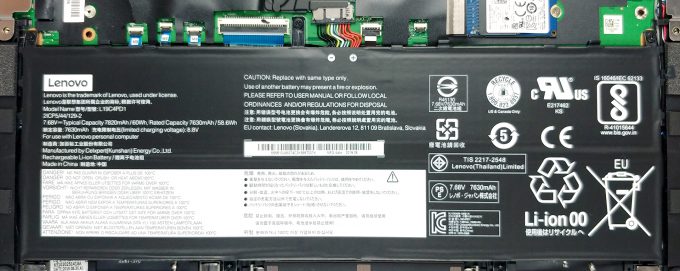

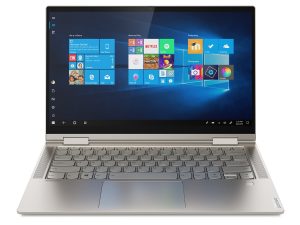
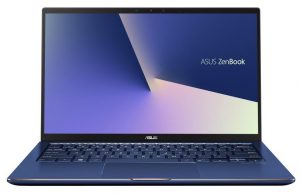








Thanks for this review. I’m looking at getting one of these because I like the more compact/chunky form factor as opposed to the C740/C940, and also it just seems like a simpler device. The only downside I felt was the limited color options, and I’m a bit afraid how the speakers will perform if down-facing in tablet mode. It’s good that the keyboard was upgraded, because the C630 keyboard was very shallow and a poor typing experience.
So I actually bought this and I like everything about it except for the fan noise. It’s too loud, and seems to be on like all the time (gets triggered if CPU usage goes over 2-3%). So loud compared to my 1st gen X1 Carbon (2013). I don’t think I can take it if a BIOS patch doesn’t fix it soon.
Also, the battery life doesn’t seem to be anywhere close to 20hrs. With full screen brightness and basic browsing tasks, it looks like it will only get 8 hours.
I fully agree with the comment on the fan noise. For me it was so unbearably irritating that I returned the laptop two days after I bought it. Such a pity, as I liked everything else about it.
Have you ever try NotebookFanControl? If it works please tell me. Thanks!
Have you ever try NotebookFanControl? If it works please tell me. Thanks!
Thinkpad fan control works fine but with the latest BIOS update things are a bit better
Great detailed review. How likely is this company to fudge up the panels with random and worse suppliers?
Is it possible to charge it over USB-PD ?
Not in the i5 512gb version sold in Italy. I don’t know in other markets, but the assistance is not well informed. In case I advise you to send the user manual of the model / version of your interest sold in your country and check it yourself.
Is it possible to connect Yoga C640 to more than 1 external screen ?